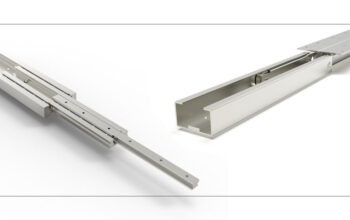The convergence of food package labeling and cosmetic label manufacture has grown in importance in today’s cutthroat industry. Despite their clear differences, there is a lot in these two areas when it comes to how they handle brand image, consumer communication, and legal compliance. Knowing why the production of cosmetic labels is so important for food package labeling provides valuable information about contemporary packaging techniques and consumer demands.
Industry convergence
When it comes to solving food package labeling problems, advanced techniques used in the production of cosmetic labels have proved beneficial. Contemporary food package labeling rules are reflected in the accuracy required for the beauty products labels especially in relation to component lists, use guidelines, and safety warnings. Advanced manufacturing techniques that benefit both industries have been developed as a result of this shared complexity.
The strict regulatory structure requires accuracy, attractiveness, and perfect information, controlling both businesses. The production of cosmetic labels introduced several methods, which have now been embraced and modified for use on the food packaging label. Standards have been raised in both industries as a result of sharing this expertise, which has a positive co-intent for both customers and manufacturers.
Regulatory Compliance and Better Compliance
The regulatory similarities between the food and cosmetics sectors are among the strongest arguments for why the production of cosmetic labels is essential to food package labeling. The proficiency acquired in managing these regulatory obstacles through the production of cosmetic labels is easily transferred to applications involving food packaging labeling.
The painstaking attention to detail demanded by labels for beauty goods has led to the development of manufacturing procedures that guarantee precision and adherence to various regulatory frameworks. Improved consumer safety and regulatory compliance are the outcomes of applying these same principles to food packaging labeling. A strong basis for compliance excellence is established by cross-training manufacturing staff and sharing quality control procedures between operations that manufacture cosmetic labels and those that label food packages.
Innovation in Technology and Material Development
The production of cosmetic labels has led the way in creating cutting-edge labeling technologies that have completely transformed the packaging sector. Food package labeling capabilities have been improved as a result of developments in adhesive technology, substrate materials, and printing procedures spurred by the strict needs of beauty product labels. More robust, eye-catching, and educational labels are now possible in both industries thanks to these technical advancements.
For some food package labeling applications, especially those involving frozen or refrigerated goods, the waterproof and chemical-resistant qualities created for beauty product labels have proven crucial. Vibrant colors, precise detail reproduction, and special effects are made possible by advanced printing techniques used in the creation of cosmetic labels. These techniques also preserve utility and longevity while improving the visual appeal of food package labeling.
Market dynamics and consumer expectations
Whether they are buying food or cosmetics, modern consumers want uniform standards of quality and presentation from all packaged goods. Consumer expectations for all packaging, including food package labeling, have increased due to the high visual standards set by the production of cosmetic labels. Food packaging applications now require the use of cosmetic-grade production techniques due to the convergence of expectations.
The psychological effects of high-end packaging go beyond the labels of cosmetics to affect how consumers see food items. The advanced design skills established in the production of cosmetic labels allow food makers to design packaging that communicates attractiveness, quality, and freshness. It has become important to implement design concepts in industries for a competitive status in both markets.
Manufacturing and Quality Control Procure
Food package -labeled operations benefit from the benchmark set by strict quality control standards created in the production of cosmetic labels. The development of systematic techniques for careful quality control required for the construction of labels for beauty goods has been carried forward, which works well for applications in food packaging. These general quality requirements guarantee consistency and dependability in both manufacturing streams.
By sharing equipment, knowledge, and processes, cosmetic labels manufacturing facilities that produce both food packaging labels and cosmetic labels can increase operating efficiency. Using special knowledge in different types of product categories leads to cost savings while maintaining the exact requirements for food packaging applications and labels for cosmetics.
stability and environmental aspects
Sustainable techniques, which are becoming more and more significant in food package labeling, were pioneered by the environmental concern that permeates the production of cosmetic labels. Environmental issues in both industries have been addressed by the creation of eco-friendly materials and procedures for beauty product brands. The sophisticated, sustainable manufacturing methods used for the labels of beauty items offer models for applying comparable strategies to the labeling of food packages, resulting in all-encompassing sustainability plans that cover a variety of product categories.
Market Evolution and Future Integration
It is anticipated that the fabrication of cosmetic labels and food package labeling will become even more integrated as markets continue to change. The lines separating various industrial specialties are likely to continue to blur due to the convergence of consumer expectations, legal requirements, and technology capabilities. Both industries will probably benefit from ever more advanced and effective manufacturing techniques as a result of this evolution.
Food package labeling is seeing an increase in the use of smart packaging technologies, which were first developed in the production of cosmetic labels. The future of packaging for all consumer product categories is represented by these cutting-edge features, which include interactive elements, temperature indications, and QR codes.
Conclusion:
The relationship between the production of cosmetic labels and food package labeling is more than just a case of industry collaboration; it is a prime example of how modern packaging has evolved to meet increased requirements for quality, compliance, and customer happiness. Food package labeling applications directly benefit from the manufacturing capabilities generated by the experience obtained in generating complex beauty product labels. This cooperation has resulted in an increase in standards in both industries, which has also produced technological progress and operational capacity that benefits both manufacturers and customers.
Knowing this connection makes it clear that the production of cosmetic labels is not only relevant but also important for the development of food package labeling. The inclusion of cosmetic-grade manufacturing standards in food packaging applications will be more important for the success of the market and the satisfaction of customers as consumers continue to increase expectations and regulatory requirements become more complicated.




